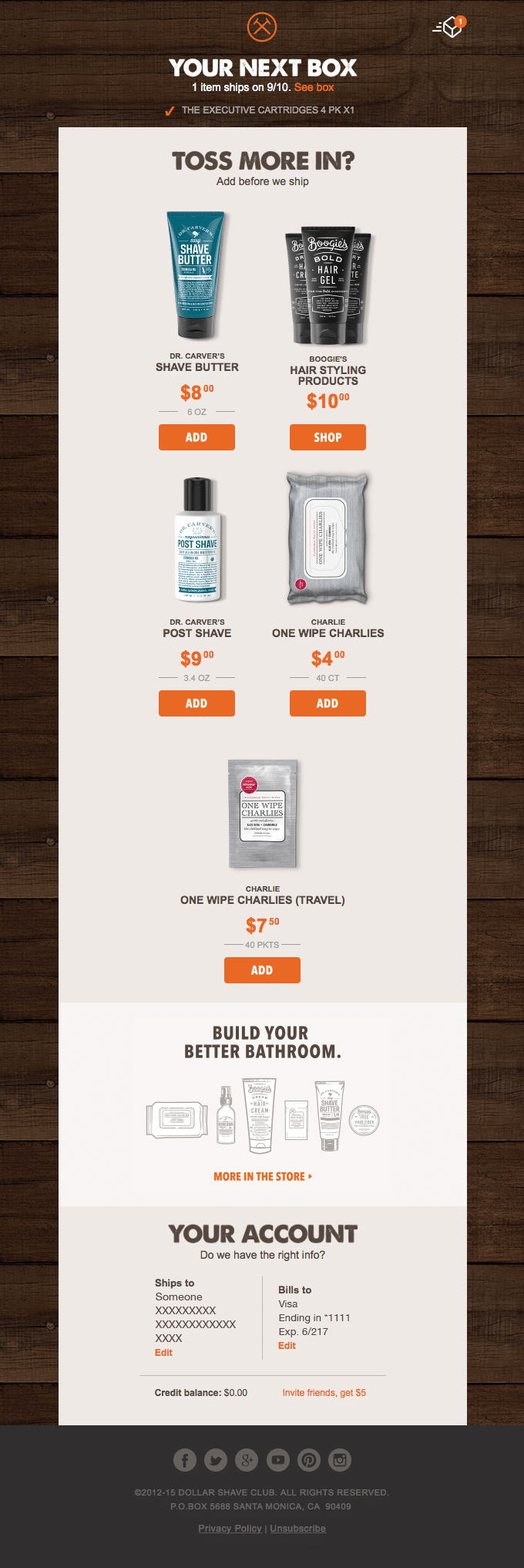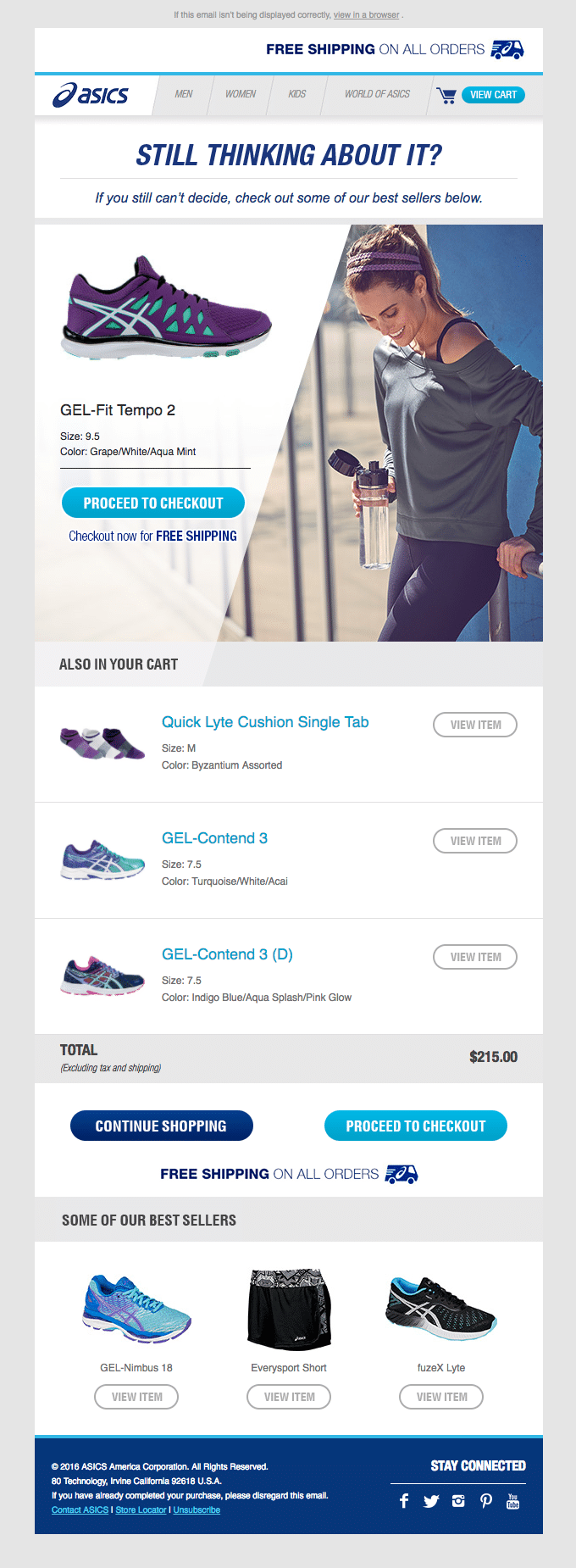Email campaigns have been and continue to be instrumental to the success of digital marketing. Email marketers know that campaigns can build relationships between brands and their audiences. They also promote brand awareness and boost engagement-driven revenue.
If you think that social media has dulled email marketing’s shine, think again. Nearly 60% of people allow email marketing to affect their purchase decision-making process. Almost 50% of consumers appreciate receiving weekly promotional emails from brands they like.
The most effective email campaigns are often those that adapt to emerging trends and methods. You can’t stick to what you’ve always known and continue to rely on best practices that may be out of date. The future of email marketing is bright and can only become more brilliant with every successful email campaign.
One trend to take note of is using a remarketing pixel in email. What is this strategy and how can it drive bigger and better campaign results? Read on to find out all about pixel tracking, remarketing and retargeting, and how all of this can improve your ROI.
What’s a remarketing pixel in email?
A remarketing pixel in email is a tiny tool implemented in emails that tracks data for further marketing purposes. These added marketing actions are often personalized email campaigns. They’re usually delivered to a smaller subset of subscribers.
What’s a tracking pixel?
A tracking pixel acts as a tag that may track your subscribers’ behavior from the moment they open a pixel-containing email. It can even catalog actions up to long after a subscriber is no longer interested in the message. Embedded somewhere in the header or footer HTML code of an email, these tags are as good as invisible. As 1×1 pixel images, they’d be barely noticeable visible even if they weren’t coded to be transparent.
Email marketers with enough know-how can create and embed these GIF files themselves in their emails, as well as write the needed code. However, programming knowledge isn’t a standard skill for all digital marketers, and many email marketing services are aware of this. As such, they can offer tools and features that already integrate the use of tracking pixels.
How are tracking pixels used in digital marketing?
Tracking pixels can show you how a subscriber behaves as they’re browsing your email. They’re ideal for collecting information and providing insights that you can use to map the next steps in your digital marketing calendar.
Pixels make a significant contribution to online marketing because they aren’t blockable. Web browser cookies work in a similar fashion, but people can block them easily.
What exactly can tracking pixels show you? They can note the OS used to view your emails. You can also see the amount of time a subscriber spends with each individual email on the screen. Pixel tracking can tell you that screen’s resolution too. You’ll also know if a subscriber clicks through to your brand’s website from particular links within your emails. Some pixels may even catalog actions taken—such as navigating to other pages—while a subscriber is on your brand’s website.
Below is a Suiteness email that uses several tracked details to deliver a marketing email. It celebrates a customer’s loyalty and past experiences with the brand. The email also includes a special offer of booking credits.
Source: Really Good Emails
Tracking pixels can also work within the HTML code of certain pages of your brand website. In fact, using pixels in this way is widely practiced and likely more common than the email alternative. You may create a Facebook pixel for your brand website or use Google Tag Manager to add pixel tags on your website or app without needing to modify HTML code.
How are digital campaign metrics affected by a retargeting or remarketing pixel in email?
Each time a subscriber comes in contact with a tracking pixel, there’s an increased opportunity for conversion. This means a chance for an increase in revenue as well. Once someone has cataloged interactions with your brand, they’ve likely done enough to express an interest in at least one product and thereby enter a customer lifecycle.
There’s so much information that tracking pixels can provide. Email marketers can use them to create several hyper-targeted and high impact email campaigns for different email list segments. On top of this, you may even take advantage of behavior-triggered emails.
Running a segmented email campaign can drive up revenue by more than 750%. This statistic shows the real magic of using tracking pixels in executing digital remarketing and retargeting campaigns.
What’s the difference between remarketing and retargeting?
You may have looked into pixel tracking before and come across the concept of retargeting. How is it different from remarketing? These two terms are often mistaken for each other or used as synonyms, though they refer to different but similar strategies.
Source: Really Good Emails
Remarketing involves introducing a product back into mainstream consciousness via marketplace reentry. This is often done by highlighting new and improved features. Repositioning promotional talking points is also common.
If your brand doesn’t have a tangible product, remarketing entices customers to keep on coming back to your brand website. Remarketing is typically done through re-engaging by email.
Some email content strategies that are complementary here include cross-selling and upselling. For example, the Dollar Shave Club email above is cross-selling items. The customer can add products to a package already scheduled for shipping. The Asics email below, on the other hand, is upselling. The brand offers free shipping with items a customer is already interested in. The message shows off some of their bestselling products too.
Source: Really Good Emails
Retargeting is more of a close-quartered effort. It involves reintroducing a product to specific customers that have previously shown interest but failed to reach the final step of purchasing it. The strategy is often multi-platform in nature, using information from website-embedded pixels and retargeting through targeted ads displayed by third-party entities like Facebook and Google. Using email-embedded pixels and email campaigns for this marketing technique isn’t as common, but can still be effective.
The big distinction is that remarketing usually calls for slight changes in a product or the way it was originally sold, while retargeting skips all of that and goes straight to reintroduction.
How does a remarketing pixel in email lead to increased personalization?
If an email remarketing campaign is hyper-targeted, it’s likely using personalization techniques fueled by information from pixel tracking. As of 2018, over 75% of digital marketers use personalized content in their marketing email, while over 65% plan to use the strategy specifically to boost sales and overall engagement.
Below is another example of a marketing initiative that may be using pixel-cataloged information on buyer behavior.
Source: Really Good Emails
This Mack Weldon email may actually be a retargeting effort and not a remarketing one. There’s no real effort to re-promote these products and the message serves mostly as a reminder of an incomplete purchase. However, there’s no doubt that this email makes use of personalization to drive its point home.
What else should you keep in mind about pixel tracking in relation to marketing?
Information from pixel tracking is most useful when taken as part of a comprehensive approach. Look at your subscribers’ behavior metrics alongside email and website statistics. It may take more work to come up with a strategy, but it can be more rewarding in the long run.
A final note: pixel tracking may be trending currently, but for how much longer is anyone’s guess. There are obviously privacy concerns. Express consent to email tracking may cover the use of a remarketing pixel or two under current laws and regulations. However, future laws may not be so accommodating.
Wrap up
Email campaigns continue to be a driving force in digital marketing. This is not only because of the consistent nature of the communication platform. Email marketing has also continued to evolve and integrate modern trends and technologies. One example of this using pixel tracking in email campaigns.
What’s pixel tracking and what is its place in digital marketing?
- A remarketing pixel in email can appear in digital campaigns when they’re manually added. You can also find them integrated into many email marketing service tools and features.
- As an unnoticeable tag in emails, a tracking pixel can lead to more varied and specific personalization opportunities. These can make segmented campaigns and triggered emails more effective.
- Better personalization in email campaigns often leads to better metrics. You may see improvements across the board, from delivery rates and open rates to conversions and sales.
- Pixel tracking is a powerful tool for email marketers, and its use should always come with the consent of your subscribers.
- It’s also best used in conjunction with other metrics. Forming an email marketing strategy benefiting from a truly comprehensive perspective can be your greatest takeaway from pixel tags.
Looking for more ways to incorporate personalization into relevant and engaging email marketing campaigns? Make it a constant companion of each unique customer’s journey.









